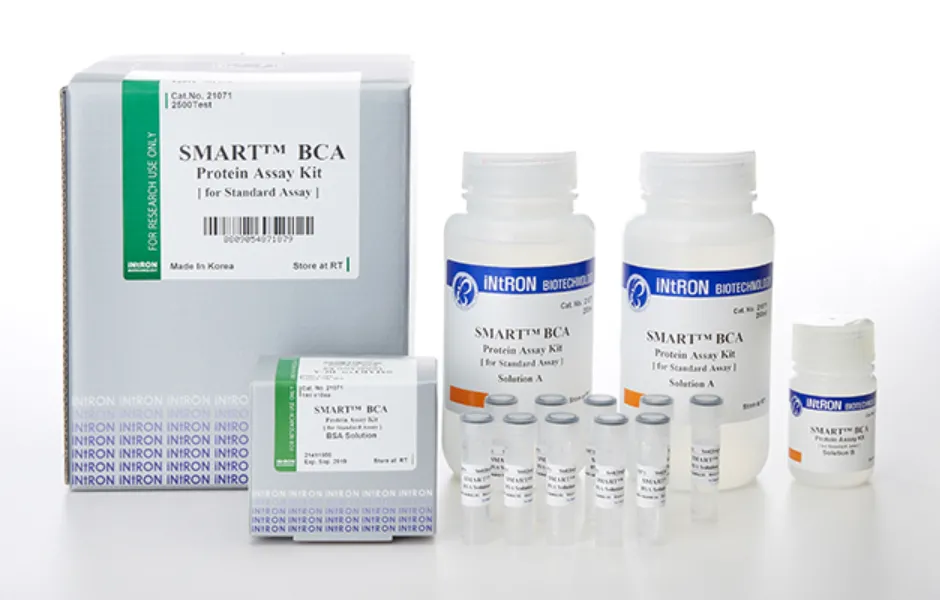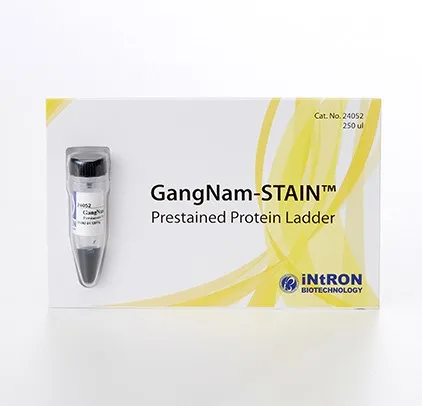
SMART™ BCA Protein Assay Kit 2,500 tests
Description
Optimized for 20 ~ 2,000 ug/ml protein purification based on BCA assay method
- • Shows high Linearity in working range of BSA: 20 ~ 2,000 ug/ml
- • Stable protein quantification is possible even in the presence of the majority of ionic / nonionic detergents
- • Variations according to protein type are lower than other methods
- • Convenient to use in micro-plate (96 well plate)
- • Simple and high sensitivity protein quantify
SMART™ BCA Protein Assay Kit is a detergent-compatible formulation based on bicinchoninic acid(BCA) for the colorimetric detection and quantitation of total protein. The purple-colored reaction product of this assay is formed by the chelation of two molecules of BCA with one cuprous ion. This water-soluble complex exhibits a strong absorbance at 562 nm that is nearly linear with increasing protein concentrations over a broad working range. (20-2,000 ug/ml) The macromolecular structure of protein, the number of peptide bonds and the presence of four particular amino acids(cystein, cystine, tryptophan and tyrosine)are reported to be responsible for color formation with BCA. Studies with di-, tri- and tetrapeptides suggest that the extent of color formation caused by more than the mere sum of individual colorproducing functional groups. Accordingly, protein concentrations generally are determined and reported with reference to standards of a common protein such as bovine serum albumin (BSA). A series of dilutions of known concentration are prepared from the protein and assayed alongside the unknown(s) before the concentration of each unknown is determined based on the standard curve.
Two assay procedures are presented. Of these, the Test Tube Procedure requires a larger volume(0.1ml) of protein sample; however, because it uses a sample to working solution ratio of 1:20(v/v), the effect of interfering substances minimized. The Microplate Procedure affords the sample handling ease of a microplate and requires a smaller volume (10-25 ul) of protein sample; however, because the sample to working solution ratio is 1:8 (v/v), it offers less flexibility in overcoming interfering substance concentrations and obtaining low levels of detection.
- Categories : Proteomics, ,
